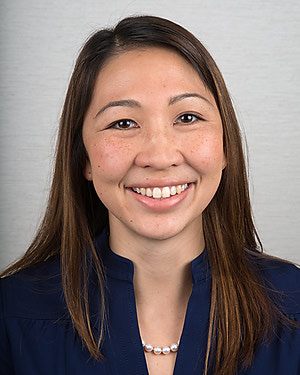
Dr. Alexander Charrow interviews 2018 Danby Grant recipient Dr. Tina Porter
June 3, 2022
Research Article:
An Open-Label, Prospective, Pilot Study of Hypertonic Saline for Hidradenitis Suppurativa
Video Transcript
Dr. Charrow:
My name is Dr. Alexander Charrow, I'm a hidradenitis specialist at the Brigham Women's Hospital and I'm here today with Dr. Tina Porter who is an assistant professor at Harvard Medical School and the director of clinical trials unit at Beth Israel Deaconess Medical Center within the Dermatology Department. She's also the associate director of research at Beth Israel Deaconess Medical Center within the Department of Dermatology. And she’s here today to talk about some really exciting research about hidradenitis and helping to solve some of the issues of tunnels that most patients suffer from. So with that I'm going to start by asking Dr. Porter a few questions. Dr. Porter, can you tell us a little bit about the problem of tunnels or fistula tracts in hidradenitis?
Dr. Porter:
Thanks for asking, Alex. So the main problem with tunnels is that they’re actually a sign that your disease has progressed more, so essentially you get these little tracts under the skin but the problem becomes that they often are very painful and they can have a lot of drainage and then we know for certain that they cause a lot of disability for patients.
Dr. Charrow:
I see, and I think both of us have seen many patients who have a lot of tunnels and drainage and a lot of pain from them. Tell me about some of the research that you've looked at to help solve the problem of tunnels within hidradenitis patients.
Dr. Porter:
Yeah, so the biggest problem with tunnels now is that the only thing we can do to get rid of them is surgical procedures. So some patients may have to undergo a procedure where they actually cut out all of the skin where the tunnel is, or they can undergo a procedure called “unroofing” where they basically snip open the top of the tunnel so that it's kind of like an indentation and they let it heal it slowly and both of these things as you can imagine have a long recovery time. So what we actually were looking at was using an injection of hypertonic saline which is just salty water where we put a small amount just about a half a milliliter into the tunnel itself with a very small needle to see if we can get the tunnel to get irritated by the salty water and then stick to its sides to close up. And so that was what our research project was really focused on.
Dr. Charrow:
What did you find out from this research?
Dr. Porter:
We had a little bit of a difficult time measuring the results because unfortunately right now for the tunnels we don't have any way to score that we can't say like, “this is a big tunnel because it is really hard to measure” or “this is a very inflamed tunnel that's really painful,” so what we were first establishing was a scoring system where we asked both the patient and the physicians who were injecting patients to rate different features of the tunnel, so we looked at just in overall improvements score, we asked about drainage, we asked about swelling, redness, pain or tenderness, odor for example and the things that we found were that overall this actually was an effective procedure. The patients got three injections 2 weeks apart over a 1-month period. And at the end of the visits, they came back a month later and we measured again overall improvement, which was improved. They had decreased drainage, decreased redness or erythema as they call it and less swelling, and also we measured their quality of life using a questionnaire and their quality of life scores actually improved from the beginning to the end. So we’re actually hopeful that this could be a promising therapy. The other thing to note is that we did ask patients about how uncomfortable they were during the procedure so they rated their pain on a scale of zero to ten and they also rated the stinging because they can also feel like a sting or burn when we first injecting salt water and most of the patients actually tolerated it quite well. We didn't really have any side effects from it, we use this in vein therapy actually, so people who have spider veins will get the same injection. And so we use the same technique for the tunnels, and then spider veins and worry about people getting ulcerations after the therapy but we didn't see that in any of the 20-plus patients that we injected in the study. So we're really excited about this, it's low cost and people recovered much more quickly than they would if they had surgery because the only point where we pierce the skin was just a tiny little needle prick for each injection.
Dr. Charrow:
That sounds like a really exciting therapy and a really amazing option that would be easy for a lot of doctors to do and for a lot of patients to have done. Do they require any numbing beforehand or could you just inject the salty water?
Dr. Porter:
We actually just inject the salty water. Sometimes we’ll numb things first, but because the numbing also requires a prick as well, usually, we decided having one prick was better. Lidocaine for example can also burn; it would probably be interesting to compare the burning of Lidocaine to the burning of the hypertonic saline, but like I said, patients overall didn’t have high pain or stinging scores. And I think they also got used to the procedure, and also we refined our technique. So, we found that if we injected more slowly, they actually had less pain. And then I think that after they had it once, they knew what was coming the second and third time around and so they felt more comfortable getting it. And actually, one of the things we didn’t study but we’ve seen these patients back because we’ve done this study over a number of years now, is patients who received these injections two years ago, their tunnels are still closed up and they come back asking if we can do it again for them.
Dr. Charrow:
Wow, that’s really exciting and really sounds like a good therapy and a really good option, cost effective for a lot of patients. Thank you so much Dr. Porter for taking the time to be interviewed today and for all the research that you’re doing. Are there any future steps you’re considering from this research?
Dr. Porter:
Yes, actually, the great news is that we just submitted all of our work to the Dermatologic Surgery Journal and it got accepted for publication, so it should be out soon. And then hopefully we’re going to follow this up with using a larger volume of saline to see if we can close bigger tunnels and include more patients in our next study. And then obviously we’re going to advocate for this to be covered by insurance as another option for patients for treating their tunnels.
Dr. Charrow:
Well, thank you so much and I really appreciate all of the work you’re doing on this.
Dr. Porter:
Thanks for having me!

